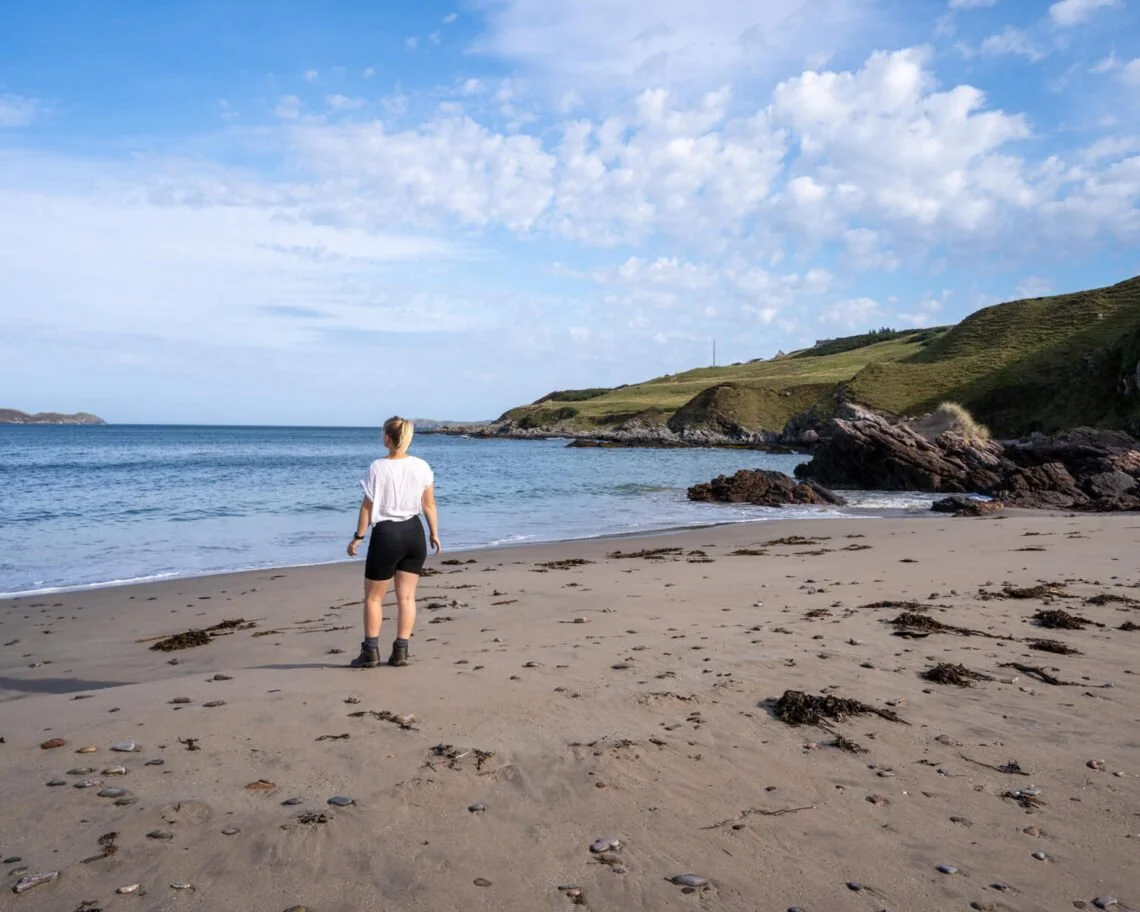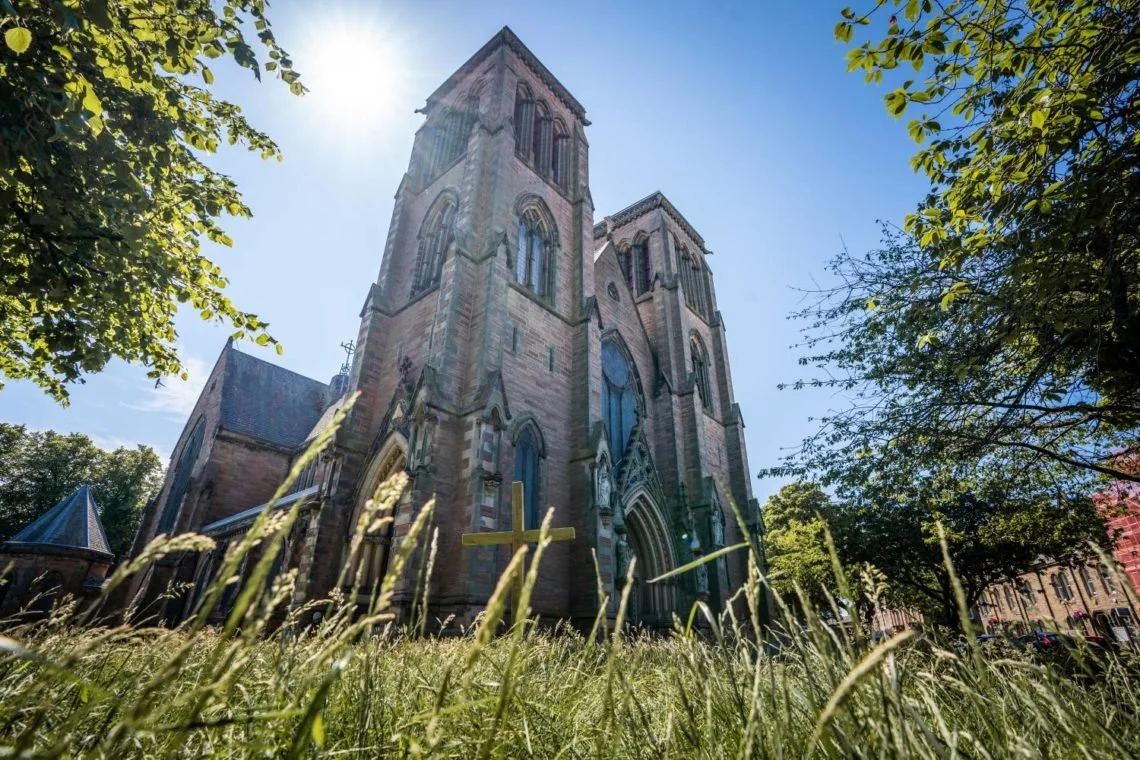5 Day NC500 itinerary
The North Coast 500, also known as the NC500, is Scotland’s most popular road trip. This circular road trip is 516 miles, starting and ending in Inverness. This route around the northern coast of Scotland offers beautiful white sandy beaches, along with a rugged coastline and dramatic mountains.
This road trip was branded by the North Coast 500 in 2015 and since then it has burst onto the scene in popularity, with many travellers wanting to get a glimpse of what this beautiful part of the world has to offer.
This North Coast 500 itinerary will help you to plan the best 5 days on the NC500 route.
Day 1 – East Coast
We would recommend getting a head start onto the route and starting your 5 day NC500 itinerary off the best way.. with chocolate.
Cocoa Mountain
One of two cafes on the NC500 route, the hot chocolate on offer here is sheer decadence. Rich and creamy hot chocolate with hand-crafted chocolate “chasers” to go on the side. They also sell a selection of cakes and touristy gifts in the coffee shop. Cocoa Mountain offers a takeaway service, as well as the option to sit inside and enjoy your drink. We would definitely recommend this as a must do on the NC500 and if you enjoy it, you can stop off at Balnakeil on the west coast for another.
Dornoch Beach
We would recommend bringing your Cocoa Mountain hot chocolate down to Dornoch Beach for a stroll. Dornoch Beach is a beautiful stretch of sandy beach that goes on for miles! It sits within walking distance from the quaint town of Dornoch. The soft white sand is met with sand dunes and a lush long grassy embankment.
The beach has gentle shallow water which is perfect for paddling or swimming. When it is low tide, you will be walking quite a distance before you get any swimming done though!
The beach is popular with dog walkers throughout the year and it is possible to walk along the beach at both high and low tide.
There is a small beach car park level with the beach that is suitable for small vehicles. Dornoch Beach Wheelchairs is located here and is a brilliant way to make the beach accessible for everyone. If this interests you, make sure to book in advance.
There is a larger car park for motorhomes and overflow parking beside the children’s play area.
If you are feeling like something to eat, Highland Larder offers some delicious food from the trailer overlooking the beach.
Dunrobin Castle
Home to Clan Dunrobin, the Dunrobin Castle on the NC500 has a rich history and dates back to the 1300s, and over the centuries, it has been the home of the powerful Earls and Dukes of Sutherland. This historical significance is reflected in the castle’s impressive architecture, which features a combination of different architectural styles, including Gothic, French Renaissance, and Scottish Baronial.
The majority of the current structure has sat here since built between 1835 and 1850. Dunrobin Castle lies north of Dornoch, on the east coast and is one of the largest castles in the northern highlands.
Entry into the castle is ticketed and it houses an impressive collection of art, antiques, and artifacts, which are on display for visitors to enjoy. This includes an extensive collection of European paintings, porcelain, and silverware, as well as items from the Sutherland family’s personal collection, such as firearms, hunting trophies, and rare books.
You can also enjoy the castle from the exterior gardens. Go for a walk around the grounds and admire the outside of the building, as well as the quiet beach at the bottom of the hill which overlooks the North Sea.
Whaligoe Steps
Next up on your NC500 5 day itinerary, hidden on the eastern edge of northern Scotland, before you reach the small town of Wick, is one of the most remarkable man-made constructions in the United Kingdom. The winding, limestone staircase of the Whaligoe Steps dates back hundreds of years to the days when this tiny harbour was one of the most important in the region. Numbering 330 in total, the steps lead down to the remains of Whaligoe harbour, which once hosted up to 14 boats of the local fishermen. Landing their daily catch here in the harbour, the fishermen and their families would then need to carry it up the winding staircase, all the way to the top.
The steps are steep and will require a level of fitness to get to the bottom and back up.
The car park for the Whaligoe Steps is small, you could also turn left off the A99 and park at Loch Watenan instead.
Castle Sinclair & Castle Girnigoe
The history and splendour of the castles around the NC500 are simply fascinating, none more so than the ancient remains of Castle Sinclair and Girnigoe. By far our favourite castle around the North Coast 500, these silent remains tell a beautiful tale of how life in the north of Scotland used to be.
Perched perilously close to the cliff edges, just north of the town of Wick, these beautiful castle remains look like they are straight out of a fantasy film. The castle itself has had quite an eventful history, including multiple seizures, grand expansions, and family murder. The earliest parts of the castle are believed to date back to the 15th century, with expansion projects being continuously added all through to the siege of 1680, which damaged the castle so badly it was never inhabited again.
John O’Groats
The most famous sight in the northern coast of Scotland and at the end of the countrywide, 874-mile trail from Lands End to John O’ Groats is the famous landmark John O’Groats signpost marking the end of the road. This signpost is one of the most photographed signposts in the world and draws thousands of visitors every single year, all eager to capture a photo at the edge of the world.
The sign that you visit today is actually a replacement of the original, which was installed in 1964 on private land and required a fee to have a photo taken beside it. In 2013 the original site was bought as part of a hotel renovation project, and upon completion, a new sign was installed in the original location available for public access.
If you wish to view the original and have your picture taken with customisable text on the sign, you can do so at the John O’Groats Caravan Park 180m from the original site.
Day 2 – The North Coast
Duncansby Stacks and Duncansby Lighthouse
After spending a night in John O’Groats, Day 2 on your epic 5 day North Coast 500 itinerary will start with heading up over the hill to see the local marvel, the Duncansby Stacks.
As you arrive at the lighthouse, you will find a small car park where you can leave your vehicle. From the car park, walk over the hill to your right and the incredible towers of rock will come into view. These colossal monuments to time are a fantastic photo opportunity.
These towering sea stacks are believed to have stood in this position for the last 6000 years, slowly eroding away due to the raw power of the North Sea. The water in this part of Scotland has proven itself treacherous over the years, which has resulted in the construction of the nearby Duncansby Lighthouse.
Built in 1924, Duncansby Lighthouse remained home to a keeper for over 70 years, until in 1997, it was fully automated and no longer required a resident. Soon after this automation, the keeper’s housing quarters showed signs of dampness and asbestos and were subsequently removed. The lighthouse tower remains here to this day, still functional and protecting boats from the crags and cliffs of this destructive span of water.
Strathy Point Lighthouse
If you enjoy cliff views and lighthouses, Strathy Point Lighthouse is another great spot to visit on your NC500 itinerary.
Built in 1958, this lighthouse sits isolated at the very northern end of the Strathy Peninsula. Hidden by the rolling and rocky hills of this desolate stretch of land, the lighthouse has now been converted to accommodate travellers for both long-term and short-term stays.
There is a small car park at the end of the road and it is a lovely area to go for a walk.
Strathy Beach
In our opinion, Strathy Beach is one of the most picturesque beaches on the northern coast and must be on your 5 day NC500 itinerary. This beach is guarded by towering cliffs to the east and the River Strathy to the west. It is pretty inaccessible, with a steep, long climb down to the beach itself. This isolated beach is well worth the journey though if you wish to make the climb down.
It is possible if you want to go for a walk on the beach or a swim and the North Coast 500 watersports will occasionally run some surfing from there when the conditions are right. The Strathy Beach car park offers a breathtaking vantage point above the wide bay and distant cliffs if you would prefer to enjoy the views from above.
There are toilets located in the car park.
Coldbackie Beach
Coldbackie Beach is one of our favourite hidden beaches on the NC500 due to how quiet it is. This beach is accessible by climbing down a steep hill down the cliff through a carved path. There is a small layby viewpoint area at the side of the road where you can park to access this beach. If it is already full however, we would recommend enjoying the views from the drive past as you will be unlikely to find anywhere else suitable to park. Follow the path down to the beach and enjoy the white sandy beach overlooking the Kyle of Tongue all to yourself. There are no facilities at this beach.
Sango Sands
As you may be able to tell, there is an abundance of beautiful beaches around the NC500 and during your 5 day NC500 itinerary, you could enjoy soaking up the views at many of them. Sango Sands is another incredible stretch of sand sitting in between the cliffs. The sand here is so clean and the water is so clear, it is quite breathtaking. There is a campsite, Sango Sands Oasis, that sits overlooking Sango Sands Beach and from here you can access the Sango Sands Viewpoint. This viewpoint is a raised wooden platform overlooking the bays on either side.
There is parking around the area and public toilets beside the Spar.
Day 3 – Visit an Island
Handa Island
The remote Handa Island is one of the best day trips that you can take on the NC500 route and one of the highlights on your 5 day itinerary. The island is around 300 hectares in size and has the highest point of over 120-metres. The island Scotland Wildlife Trust nature reserve, is home to over 100,000 wild seabirds and a greatly significant area in terms of birdlife and marine vegetation.
It is important to observe these beautiful animals from a distance and not cause any disturbance to them. Drones are NOT allowed on Handa Island and it can only be explored by foot.
It is possible to visit the island by catching a ferry from the local port across to the island, where you will be met by an RSPCA volunteer who will give you a quick induction to the island. These volunteers take turns to live on the island and study the local wildlife, so they are able to provide great insight into what you can expect to see on the island. They will also warn you of where you are and are not allowed to go on the island, depending on the breeding season.
The island itself is quite small, with a walking loop around the entire island taking only a few hours. The walk around the island is absolutely breathtaking, made even better by the stunning views of mainland Scotland across the light blue water. Keep an eye out for dolphins and whales off the shore and as you make your way across to the island by boat.
The small, ribbed boat from Tarbet across to the island, normally running between April to September. The ferry runs six days a week, with no service on Sundays, and is of course at the discretion of the captain based on weather conditions. If you wish to know more about the ferry, you can find contact details on the website.
Ullapool
The largest habitation on Scotland’s northwestern coast, the harbour town of Ullapool is home to around 1,500 people, and acts as the central hub for exports to the remote islands of the Outer Hebrides. Protected by the surrounding ridges of the mountains that tower over Loch Broom, Ullapool offers possibly one of the most picturesque town views in the highlands. There are many great things to do in Ullapool, enjoy your time in this buzzing and welcoming highland town by visiting one of the many bars and restaurants that line the seafront street, offering stunning views down the loch towards the southern end of Loch Broom.
Day 4 – West Coast
Ullapool Hill
Starting off day 4 on your NC500 tour itinerary, Ullapool Hill is located within walking distance from the town centre. This is a short yet steep walk that reveals incredible views over Ullapool and Loch Broome. We would recommend walking up for sunrise to catch the golden glow and to make time for the rest of the day’s activities.
You can park either on the seafront which is paid parking or in the large car park beside Tesco which is a donation. Leave around 2-2.5 hours for this walk as it is around a 7.5km round trip.
Gairloch Kayaking & Canoeing
If you are wanting to see some wildlife on the west coast of Scotland during your NC500 trip, then you won’t want to miss an experience out with Gairloch Canoe and Kayak Centre. Leaving from Shieldaig Lodge, you will head out on a kayak, tandem or single depending on your preference. An experienced guide will talk about points of interest whilst on the lookout for curious wildlife.
On our kayak tour, we were lucky to see a colony of seals, sunbathing and swimming around, following our kayaks. You may also see a variety of bird species flying around and nesting on the rocks. This was one of our favourite things to do on the west coast of Scotland.
Victoria Falls
Victoria Falls is a beautiful waterfall on the North Coast 500 nestled in the forest across from Loch Maree. Named after a visit by Queen Victoria in 1877, Scotland’s answer to South Africa’s towering giant sits not far from the beautiful Loch Maree. Accessible by wheelchair, a flat, dirt path leads out to the viewing platform, which offers a great view of the cascading water into the lower gorge.
There is a walking route that follows the waterfall upstream for more beautiful views across the Loch.
Victoria Falls is part of the Forestry Commission and it is free to park here.
Beinn Eighe National Nature Reserve
West of the highland town of Kinlochewe, the towering trinity of Torridon peaks guard the lower banks of Loch Maree. The most prominent peak of this ridge is Beinn Eighe, which stands 1010m tall and is a hugely popular munro, which features a well-walked path up its steep slopes to its rocky and rough ridgeline. A good walk for experienced hikers however it is unlikely you will have time for that peak on this itinerary.
You can either park in the car park and admire the views over the loch from the nature reserve or go on one of the beautiful forestry walks in the area.
Day 5 – West Coast – Inverness
Shieldaig
Shieldaig is a lovely seafront village overlooking Loch Torridon. We would recommend coming here for a morning coffee or some breakfast. However we would advise calling ahead to make sure they are open and you are not left disappointed as being a small village, your place of choice could be closed.
Applecross
Applecross is a quaint seafront village, set out on a peninsula on the west coast. There are two ways to reach the small village of Applecross, one leading around the peninsula to the north and one snaking its way directly over the mountains. If you are driving a large vehicle or are not comfortable driving on narrow, winding roads with steep drops, then we suggest you take the scenic route to the north.
The Bealach na Ba is one of the world’s most spectacular drives. It sits as the third highest road in Scotland and has the steepest ascent of any road in the UK, reaching an altitude of 626 metres. Named “the pass of the cattle“, the Bealach na Ba was once the only route from Applecross to the rest of the country and was used by farmers to transport livestock to the markets in central Scotland.
Today it is famous for its narrow, twisting turns, similar to those in the Italian Alps, as well as its stunning view of the sea from its highest point. On a clear day, it is possible to see all the way to the Isle of Skye and the beautifully haunting outline of the Cullin mountain range.
Inverness
Your road trip ends back in the capital of the highlands, Inverness. If you have time, there are a lot of things to do in Inverness, including boat trips, shopping and the famous Leaky’s Bookshop.




















